Refund Guaranteed
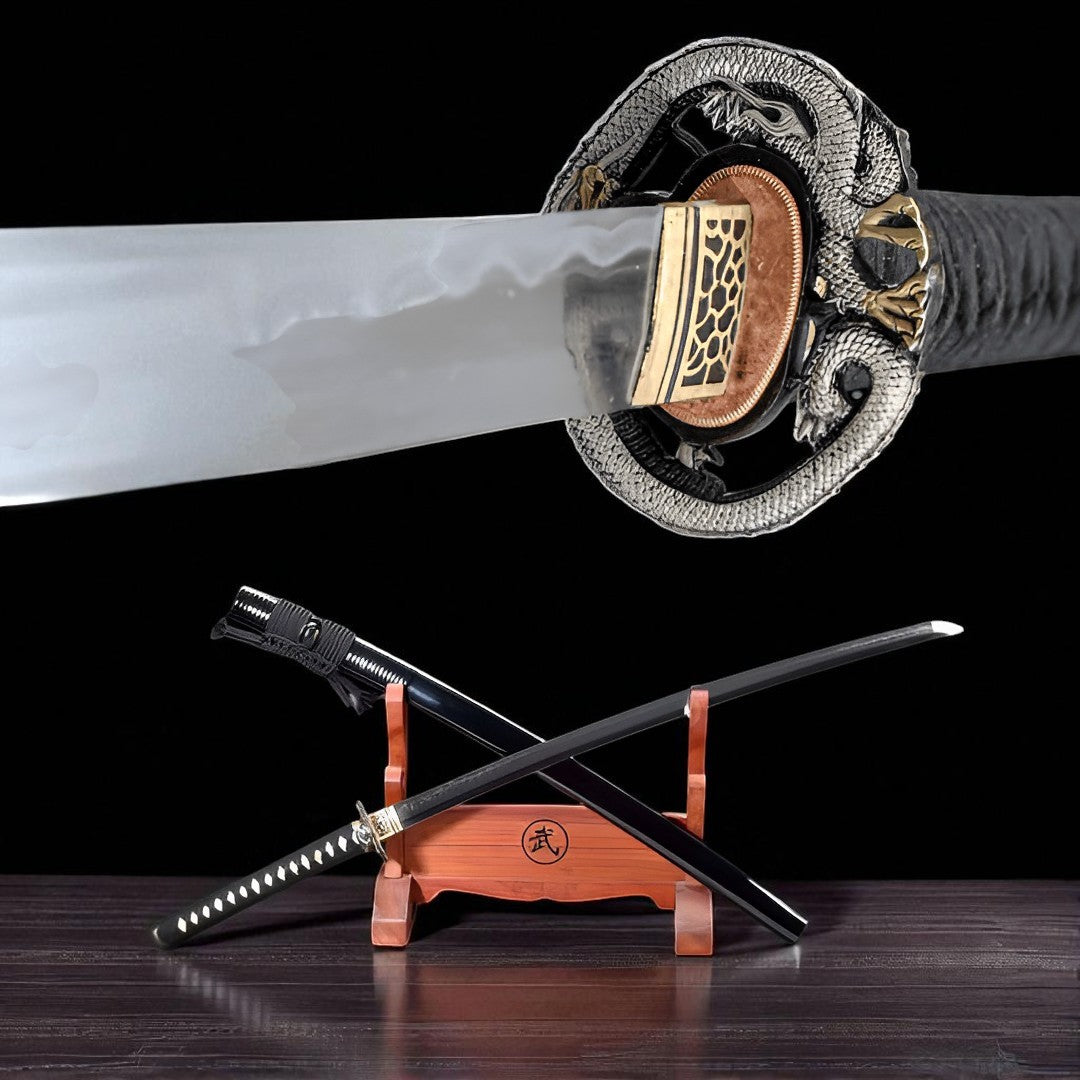
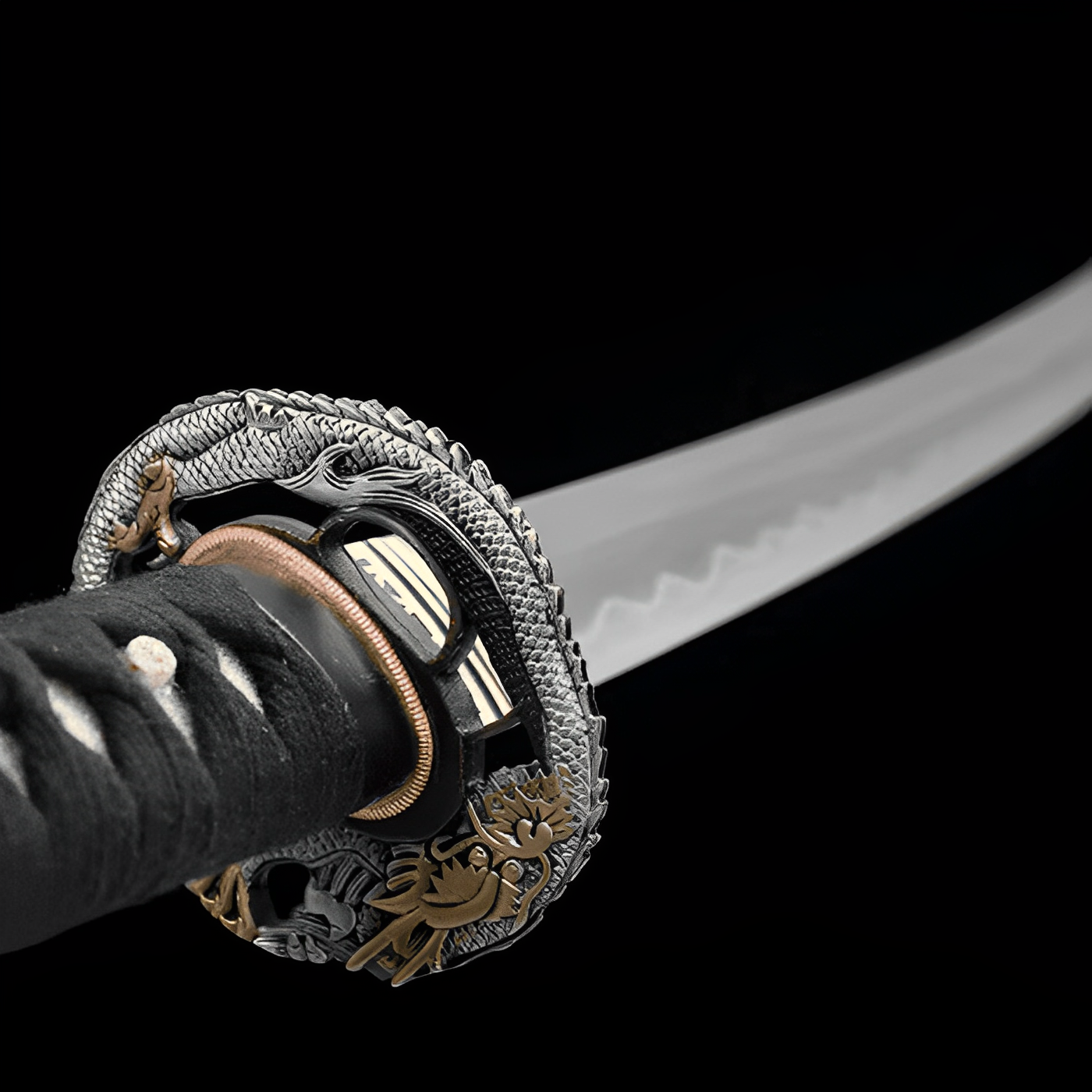
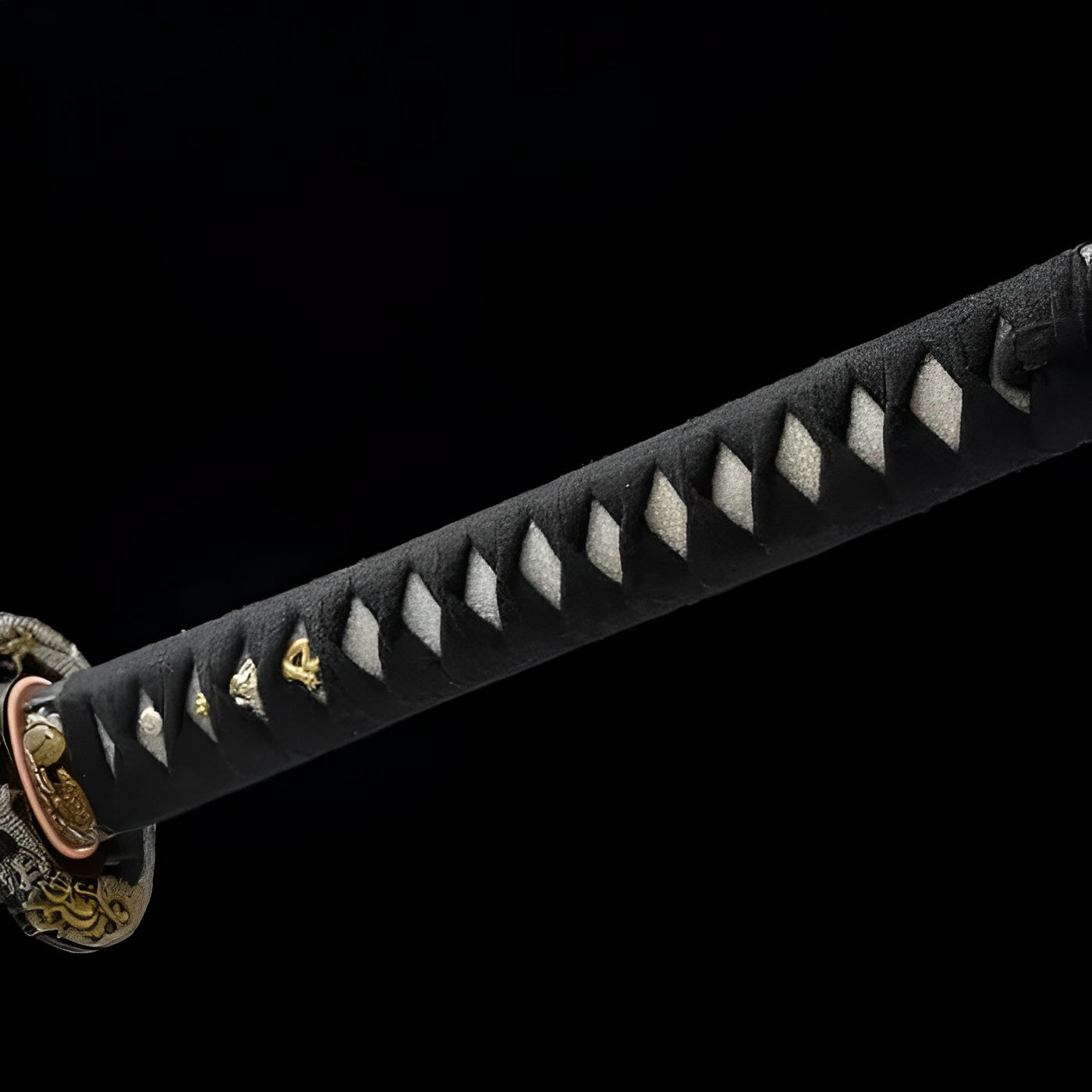
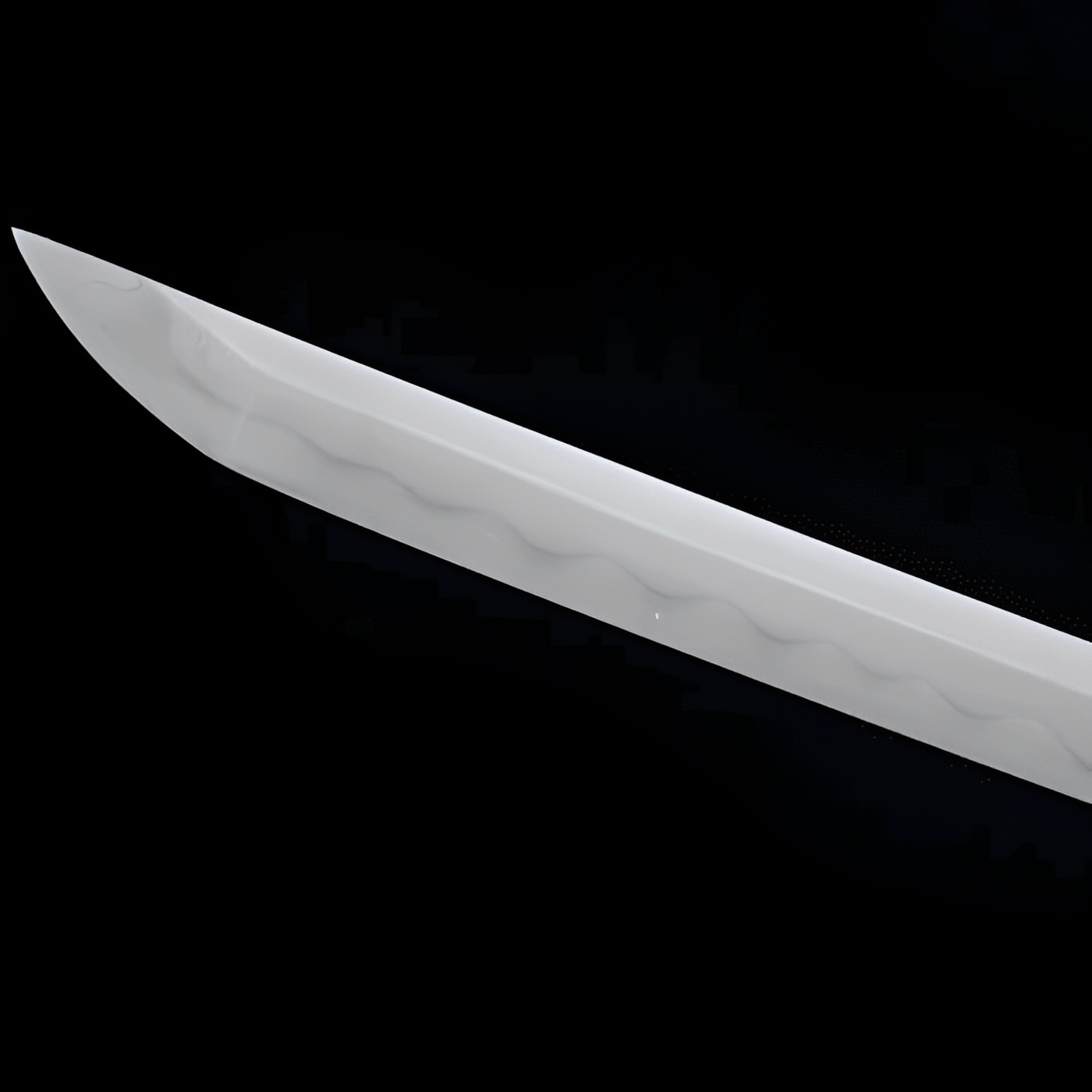
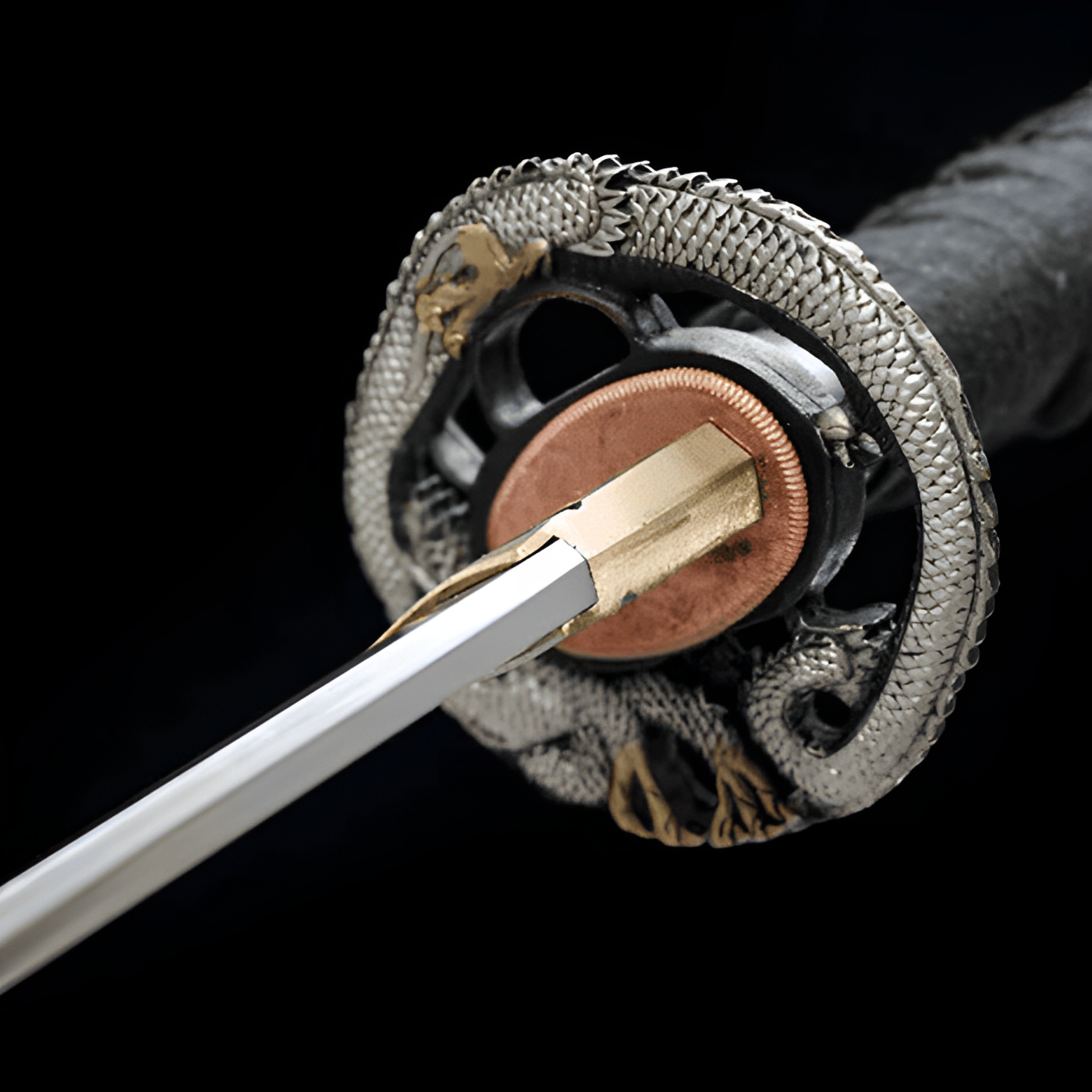
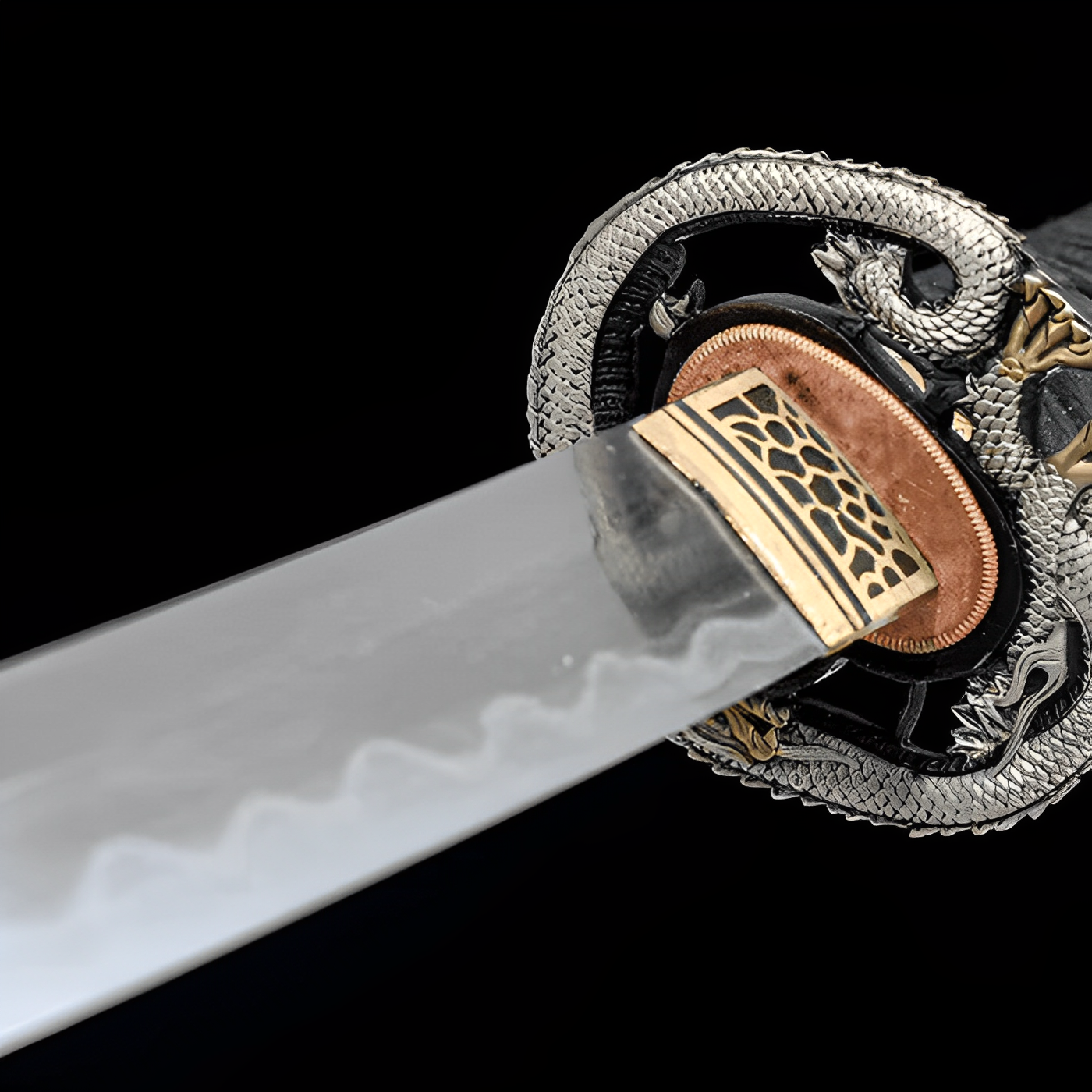
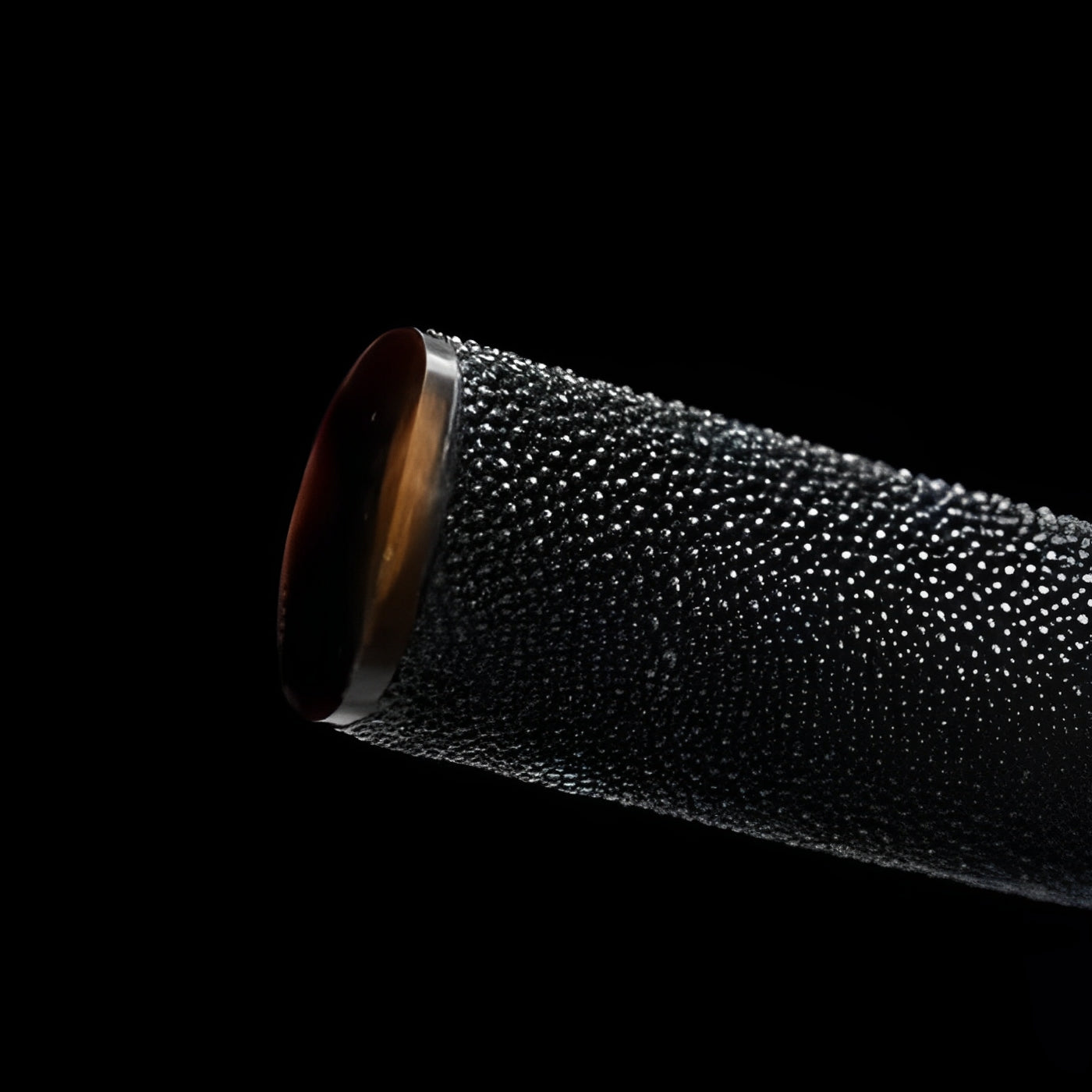
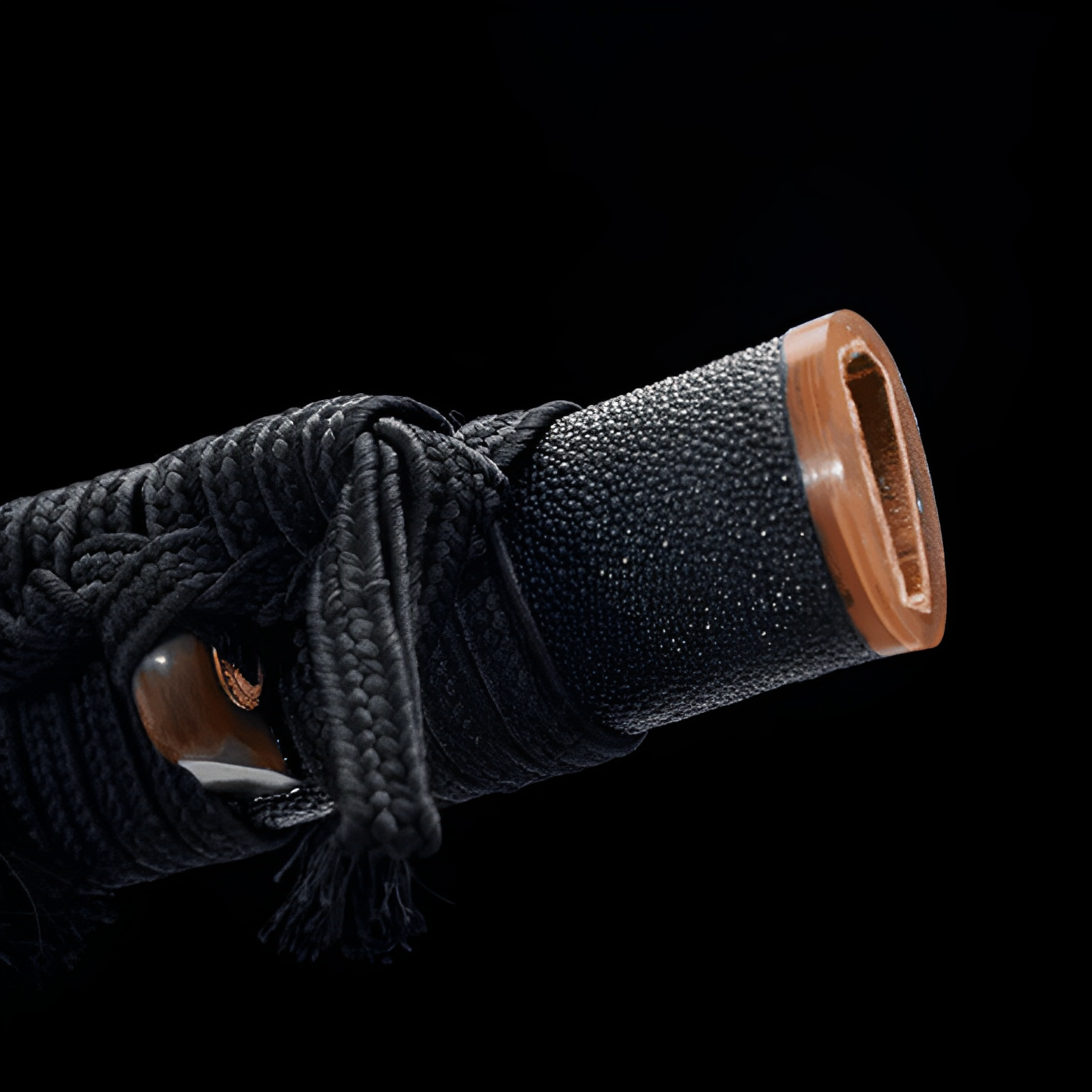
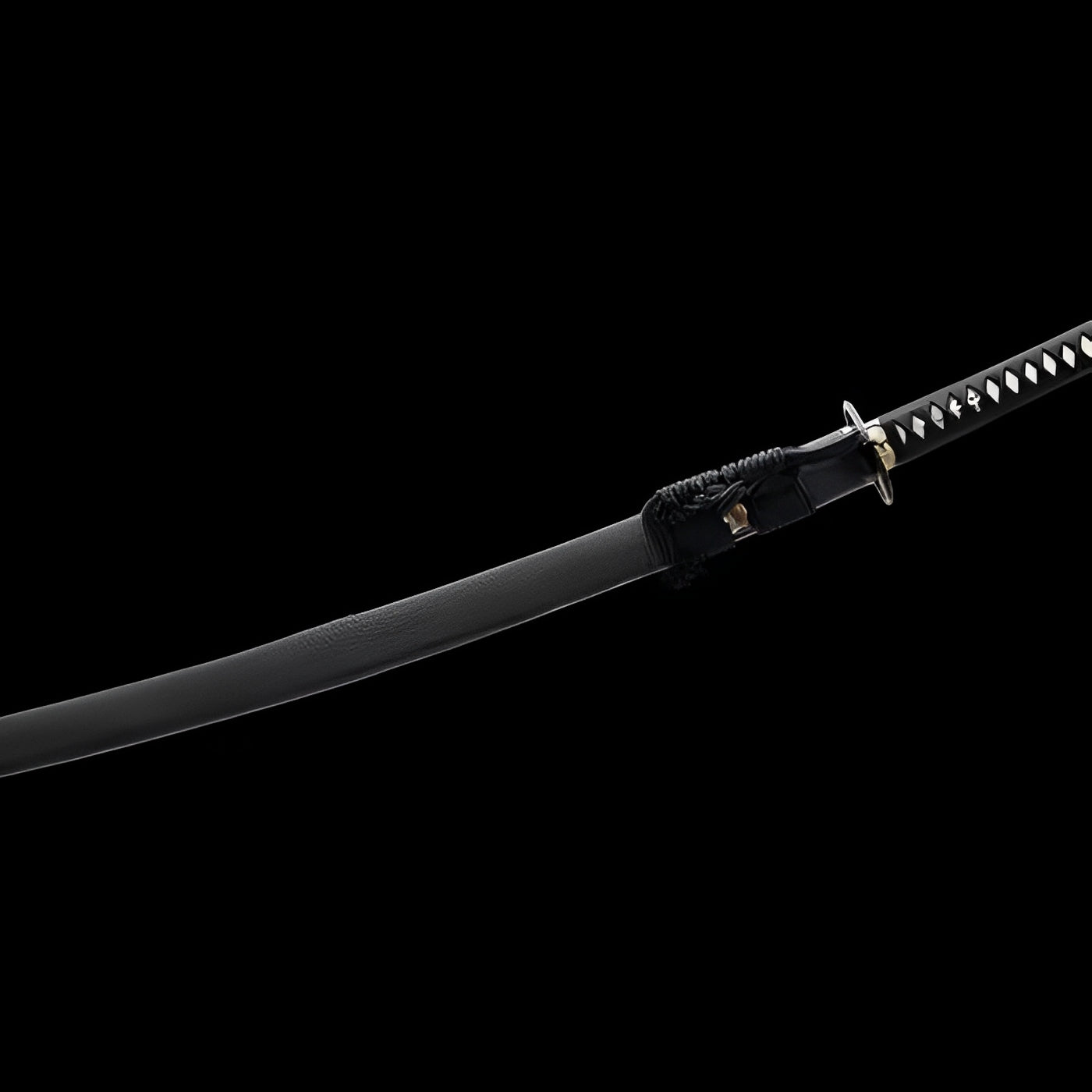
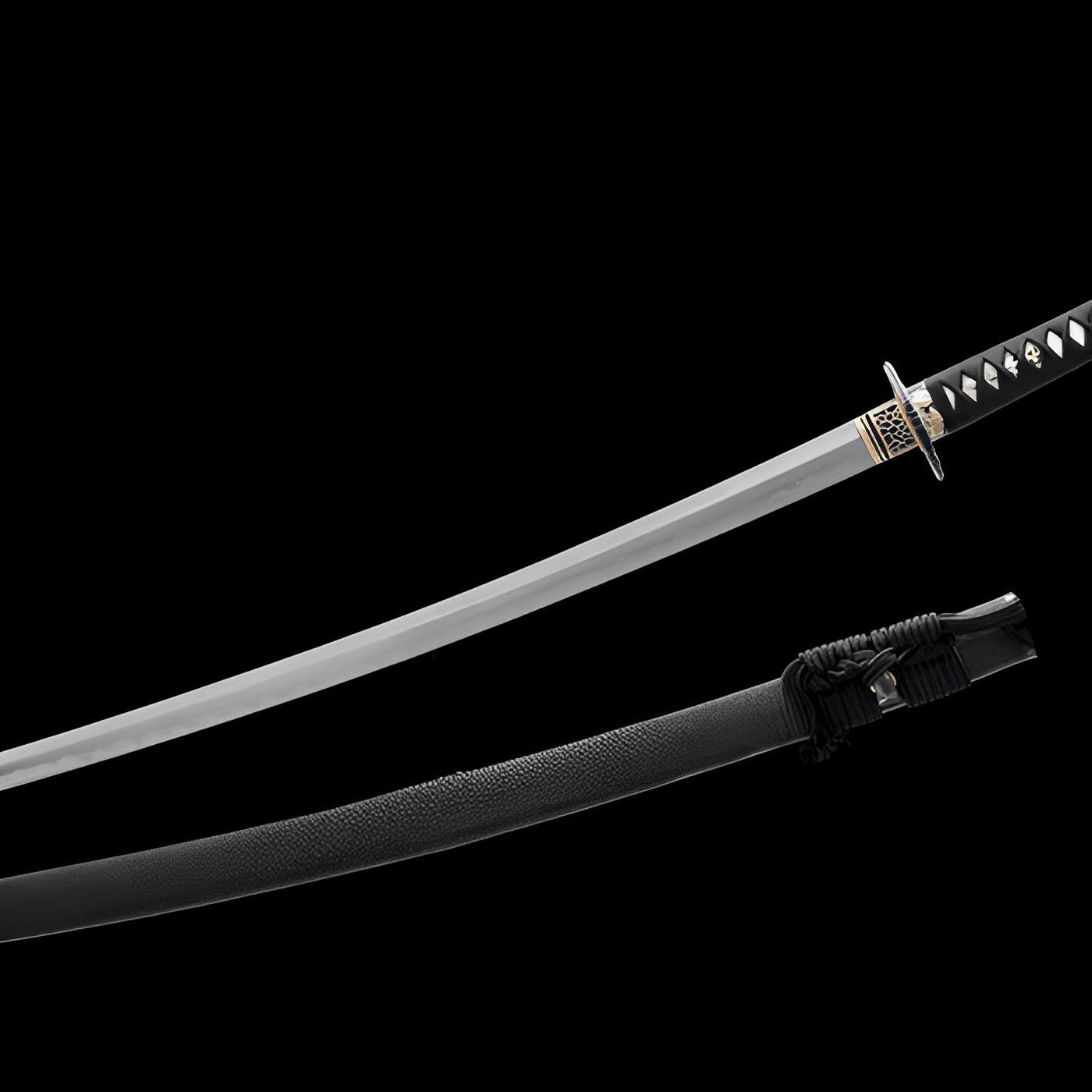
Why choose us
Ships within 48/72h
Forged Blade
Collector Quality
Trusted Globally
Inspired by Japan
Ryūjin Katana (T10 Damascus Steel & Genuine Hamon) - 竜神
Popular upgrades
Free Shipping over $250
No Bots, No AI
Refund Guaranteed
Free Shipping over $250
No Bots, No AI
Our team is here to help with any questions or concerns.
We’re always happy to assist you — don’t hesitate to reach out.
Why choose us
Ships within 48/72h
Forged Blade
Collector Quality
Trusted Globally
Inspired by Japan

Ryūjin Katana (T10 Damascus Steel & Genuine Hamon) - 竜神
Specifications
- Full silk in handle
- TRANCHANT
- Hand-forged
- Blade material: Refined T10 steel on the inside and DAMASCUS with genuine Hamon on the outside.
- Habaki material: Brass
- Tsuba in finely sculpted, silver-plated iron
- Saya in lacquered magnolia wood surrounded by genuine stingray leather
- Koiguchi & Kurigata in buffalo horn
- Tsuka-ITO in cotton
- Overall size: 105cm
- Blade size: 72cm
- Blade width: 3.2cm
- Blade thickness: 0.7cm
- Handle size: 30cm
- Includes: Katana and scabbard
Ryūjin Katana - Dragon God Ocean Protector Legacy
Invoke maritime divinity with Ryūjin Katana, blade consecrated to dragon god ruling seas. This devotional ocean deity weapon transcends decoration - three-dimensional dragon coiling around guard creating sculptural shrine where steel meets hand, damascus wave patterns suggesting deity's domain where storms obey his will, copper accents evoking treasure hoards in underwater palaces, the entire piece embodying relationship between maritime cultures and divine protector whose favor meant survival while his wrath summoned tsunamis, asking whether you'll navigate ocean's dangers trusting luck alone or carry blade acknowledging forces controlling depths beneath keels, currents determining arrivals, the dragon god whose moods make difference between safe harbor and watery grave.
Ryūjin Divine Mythology
Ryūjin (龍神 or 竜神 - "Dragon God/Spirit") represents specific deity in Japanese Shinto-Buddhist syncretism - the dragon king governing oceans from crystalline underwater palace (Ryūgū-jō 龍宮城), controlling tides through magical jewels (Kanju and Manju), capable of summoning typhoons yet also protecting worthy sailors, his dual nature creating complex worship where prayers sought both protection from ocean's dangers and prosperity from ocean's bounty. This divine protector blade channels centuries of maritime culture's relationship with deity whose power over their livelihood demanded constant reverence, offerings, proper respect lest capricious divine favor turn to deadly divine wrath.
Specifically, Ryūjin mythology includes famous legends - the fisherman Urashima Tarō rescued turtle (Ryūjin's daughter in disguise) and received invitation to underwater palace where time flowed differently, the warrior-empress Jingū borrowed tide-controlling jewels enabling military conquest, countless sailors' tales of dragon-shaped clouds presaging storms or favorable weather depending on how recently they'd honored dragon god through proper rituals. That narrative tradition created cultural understanding that ocean's mysteries connected directly to divine will, that respecting forces beyond human control proved wisest policy when venturing onto waters where dragon god's judgment determined fate.
Traditional coastal communities specifically maintained Ryūjin shrines (often featuring distinctive torii gates standing in water), the architectural placement acknowledging deity's domain existed where land ended and sea began, the liminal space demanding recognition that human laws yielded to divine authority beyond shore. Annual festivals (like Umi no Hi - Sea Day) included offerings thanking Ryūjin for safe passage, abundant catches, protection from disasters, the reciprocal relationship where humans provided respect and offerings while deity provided protection and prosperity.
Buddhist syncretism specifically incorporated Ryūjin into broader cosmology - associating dragon kings with Buddhist guardian deities (Nāgarāja in Sanskrit), the integration enabling both indigenous Shinto ocean worship and imported Buddhist practices coexisting through recognizing dragon god serving protective function within universal divine order. The syncretic guardian blade therefore represents that cultural fusion where native Japanese spirituality and introduced Buddhism merged into unique Japanese religious landscape impossible categorizing as purely one tradition versus another.
Mythology collectors specifically appreciate pieces depicting particular deities rather than generic dragons, understanding that Ryūjin carries specific cultural weight beyond "cool dragon design," the blade connecting to actual worship traditions where real people made real offerings hoping real deity would protect them from very real ocean dangers killing thousands annually before modern navigation technology and weather prediction enabled surviving what ancient mariners faced with only faith and dragon god's favor protecting them.
Three-Dimensional Dragon Guard
The sculptural dragon wrapped around tsuba creates this blade's most distinctive feature - not flat engraving or surface decoration but fully three-dimensional metalwork where dragon appears emerging from guard's surface, scales individually formed through metalworking requiring jeweler's precision, the creature's body coiling around creating physical barrier protecting hand while simultaneously serving as shrine housing deity's symbolic presence. This sculptural deity guard transforms functional sword component into religious icon, the tsuba becoming threshold between mundane world and divine realm, the place where wielder's mortal hand meets blade consecrated to ocean god's service.
Traditional Japanese metalworking (金工 kinko) specifically developed high-relief and fully dimensional techniques for sword furniture - master craftsmen (金工師 kinko-shi) achieved fame creating tsuba, menuki, fuchi-kashira featuring dragons, deities, landscapes emerging from metal through combination of casting, chasing, and finishing techniques requiring years mastering. The dragon's positioning wrapping around guard particularly demonstrates advanced planning - the composition must work from every viewing angle, the form must not compromise guard's protective function, the weight distribution must maintain sword's balance, those constraints forcing creativity producing solutions impossible when working without functional requirements.
The specific dragon pose - coiling protectively around guard - creates symbolic message distinct from aggressive attack poses or swimming poses: this dragon guards, protects, creates barrier between wielder and threat, the posture communicating deity's protective function rather than mere power demonstration. That iconographic choice proves thoughtful design where every artistic decision serves unified vision about blade's purpose and the deity it honors.
The tactile dimension specifically matters - handling sword means touching dragon directly, the physical contact creating psychological connection impossible with purely visual decoration, the three-dimensional form making deity's presence tangible rather than abstract image on distant blade surface. That haptic engagement transforms carrying sword into continuous physical reminder of divine protection, every grip renewal of relationship between warrior and guardian deity whose favor the sword represents.
Damascus Ocean Wave Patterns
The visible damascus steel patterning specifically suggesting ocean waves creates perfect visual metaphor for Ryūjin's domain - the flowing steel layers mimic water's perpetual motion, the pattern's organic variation suggests waves' unpredictable beauty, the light-reflecting properties create shimmer resembling sunlight dancing on ocean surface, the metallurgical technique serving functional purpose (layered steel's performance benefits) while simultaneously depicting deity's maritime realm. This domain visualization steel achieves synthesis where technical requirements generate aesthetic communicating narrative, the damascus waves becoming literal representation of Ryūjin's authority over waters the pattern depicts.
Unlike #38 Elden Ring's damascus representing Rivers of Grace (gaming context) or #40 Ginkai's hitatsura suggesting storm-tossed seas (artistic narrative), Ryūjin's damascus specifically represents deity's controlled ocean - not chaotic waves but ordered patterns reflecting divine will imposing structure on chaos, the regular-yet-varied damascus layering suggesting natural law governing apparent randomness, the waves acknowledging dragon god's power organizing oceanic forces rather than merely depicting water generically.
Traditional Japanese metalworking actually paralleled Middle Eastern damascus technique through jihada (地肌 - "skin pattern") created by folding steel repeatedly, the visible grain patterns on finished blades indicating forging quality and smith's technique. While not identical to pattern-welded damascus, the conceptual similarity - creating visible patterns through layered steel - demonstrates independent recognition across cultures that layered construction produces both functional benefits and aesthetic beauty, the convergence suggesting optimal solutions when different traditions pursue similar goals separately.
The white/silver appearance specifically evokes ocean foam, moonlight on water, the pale colors sailors see when waves crest catching light, the visual associations reinforcing maritime theme throughout design. Where dark damascus might suggest volcanic forces or earthly power, this pale damascus maintains ocean connection, every design element reinforcing unified vision about blade's relationship to sea god rather than random pretty features assembled without thematic coherence.
Copper Ocean Treasure Aesthetic
The distinctive copper-colored habaki and accent elements create warm contrast against cool white-silver blade, the metallic warmth suggesting treasures from Ryūjin's underwater palace - the copper and bronze artifacts legendary in dragon king mythology, the magical items stored in crystalline chambers where loyal subjects lived lives of luxury rewarding service to deity. This divine treasure blade channels those legendary hoards where dragon kings accumulated wealth transcending mortal comprehension, where pearls granted wishes, where time flowed differently, where mortals occasionally gained access through exceptional service or lucky rescue of disguised divine messenger.
Specifically, copper's maritime associations run deep across cultures - copper-bottomed ships resisted barnacles, copper tools survived saltwater better than iron, copper coins represented maritime trade wealth, the metal's practical value and symbolic associations with ocean commerce making it perfect choice for blade honoring ocean deity. The maritime metal accent therefore isn't arbitrary color choice but culturally appropriate selection communicating understanding of relationship between material and meaning.
Traditional Japanese color aesthetics specifically valued copper patina (緑青 rokushō - verdigris) as beautiful aging process rather than corruption, the green-blue oxidation colors connecting to ocean's color palette, the acceptance of natural change reflecting Buddhist impermanence philosophy. While this blade's copper appears fresh and bright, the material's potential aging connects to themes about relationship with deity spanning lifetimes, the blade potentially accompanying wielder's descendants across generations as copper weathers and ocean god's protection continues.
The warm copper against cool silver-white also creates temperature symbolism - warm sunlight penetrating cool ocean depths, human warmth seeking divine favor from powerful yet distant deity, the color interaction visualizing relationship dynamics where mortal devotion attempts warming distance between human and divine realms.
Guardian Deity Collection
This devotional protection piece serves collectors appreciating religious/spiritual dimensions of sword culture, recognizing that historical warriors didn't view weapons as mere tools but often as sacred objects consecrated to deities, blessed by priests, carrying spiritual weight beyond physical steel. The Ryūjin blade specifically honors that tradition where military equipment involved divine favor, where success in battle or safety at sea required supernatural assistance supplementing human skill, where the line between practical tool and religious icon blurred into single object serving both functions simultaneously.
Traditional Japanese culture specifically practiced weapon consecration rituals (even modern martial arts sometimes include ceremonial blessing of equipment), the religious dimension acknowledging that combat involved forces beyond pure technique, that fate played role where preparation met circumstance, that acknowledging powers beyond human control through appropriate reverence proved tactical wisdom rather than superstitious foolishness. The consecrated warrior blade participates in that tradition where spirituality and martial capability intertwined inseparably.
Museum contexts specifically welcome pieces depicting specific deities with documented worship traditions - Ryūjin representations in art, shrine architecture, ritual objects enable contextualizing sword within broader cultural/religious framework, the blade becoming educational tool teaching about how Japanese maritime communities understood their relationship with ocean's dangers and opportunities through divine intermediary who could be petitioned, honored, hopefully won to your side through proper respect.
Contemporary spiritual interest specifically includes people exploring traditional Japanese spirituality (Shinto, Buddhism, folk practices), often seeking tangible connections to those traditions beyond abstract study. The Ryūjin blade serves that desire - physical object embodying genuine mythological tradition, the dragon god's depiction following iconographic conventions from actual worship rather than invented fantasy, the piece enabling personal relationship with cultural heritage through material culture rather than purely intellectual engagement.
The protective talisman sword particularly appeals to collectors who appreciate weapons' psychological dimensions - carrying blade depicting protective deity creates confidence, the psychological benefit potentially affecting performance through belief reducing anxiety, whether divine protection operates supernaturally or merely psychologically proves less important than functional outcome where faith enables courage that timidity would prevent. The blade becomes tool serving multiple purposes: practical weapon, artistic object, spiritual focus, psychological anchor.
Care Instructions: Maintain this sacred guardian blade understanding you preserve not just steel but representation of deity deserving respect. The three-dimensional dragon tsuba requires careful cleaning - use soft brushes removing debris from scales' crevices without damaging delicate metalwork, the tactile intimacy of maintenance becoming meditative practice honoring craftsmanship and deity. The damascus wave patterns need protection from corrosion - wipe after handling, apply sword oil preventing oxidation that would obscure ocean patterns representing dragon god's domain. The copper elements require decision: polish maintaining bright warm appearance or allow natural patina developing over time, both approaches valid but reflecting different philosophies about relationship with aging and change. Handle knowing this represents specific deity with centuries of worship tradition, that carrying Ryūjin blade connects you to countless sailors, warriors, coastal communities who petitioned dragon god for protection, safe passage, favorable conditions. Display where it prompts reflection about forces beyond human control, about wisdom acknowledging limits while still acting courageously, about how ancient peoples understood their relationship with nature's power through divine intermediaries making incomprehensible forces somewhat approachable through ritual and respect. Consider this blade teaching that different cultures developed similar strategies managing anxiety about uncontrollable dangers: personify forces, establish reciprocal relationships through offerings, trust that proper behavior earns favorable treatment, the psychology underlying religious practice serving genuine function regardless of whether deities exist objectively. The dragon god reminds: ocean remains dangerous, respect proves wiser than arrogance, acknowledging powers beyond yourself demonstrates strength not weakness, and sometimes believing protection exists enables courage achieving what cynical skepticism would prevent through paralyzing doubt.
Dragon god coils. Ocean waves flow. Divine protection granted those showing proper respect. Ryūjin watches from depths.
Legal Disclaimer
By purchasing from Katana Corp, you acknowledge and agree that:
- You are at least 18 years of age (or the age of majority in your jurisdiction).
- You are solely responsible for verifying and complying with all local laws and import regulations before placing an order.
- Some countries prohibit the importation of swords entirely. Katana Corp is not responsible for orders delayed, seized, or refused by customs authorities.
- All katanas and related products are sold strictly as decorative and display items. They are not intended or certified for combat use.
- Depending on the jurisdiction, swords may legally be considered bladed weapons, subject to specific restrictions or prohibitions.
- Katana Corp disclaims all liability for any injury, damage, or legal consequences resulting from misuse, abuse, or unlawful use of its products.
For full details, please refer to our Terms of Service.
Care & Maintenance
To maintain your katana's appearance and performance over time, we recommend:
- Regularly wiping the blade with a soft cloth to remove fingerprints and moisture.
- Applying a light coat of choji oil to prevent rust (for carbon steel blades).
- Storing the sword in a dry place, preferably inside its saya.
- Avoiding direct contact with hard surfaces to preserve sharpness and finish.
For more care tips, check our full maintenance guide in the FAQ section.
Behind the Blade
Every katana we offer carries the essence of centuries-old craftsmanship.
More than just a weapon, the katana symbolizes discipline, honor, and mastery.
Our artisans draw inspiration from traditional forging methods to ensure each blade reflects the spirit of the samurai — strength, precision, and soul.
Owning one is not just about aesthetics — it’s about carrying a piece of that legacy.
User Experience
This katana is designed to offer a perfect balance between blade and handle.
Its ergonomic tsuka (handle) allows a secure two-handed grip, while the weight distribution ensures smooth, fluid movement.
Whether for training, display or cutting practice, handling feels natural and precise.
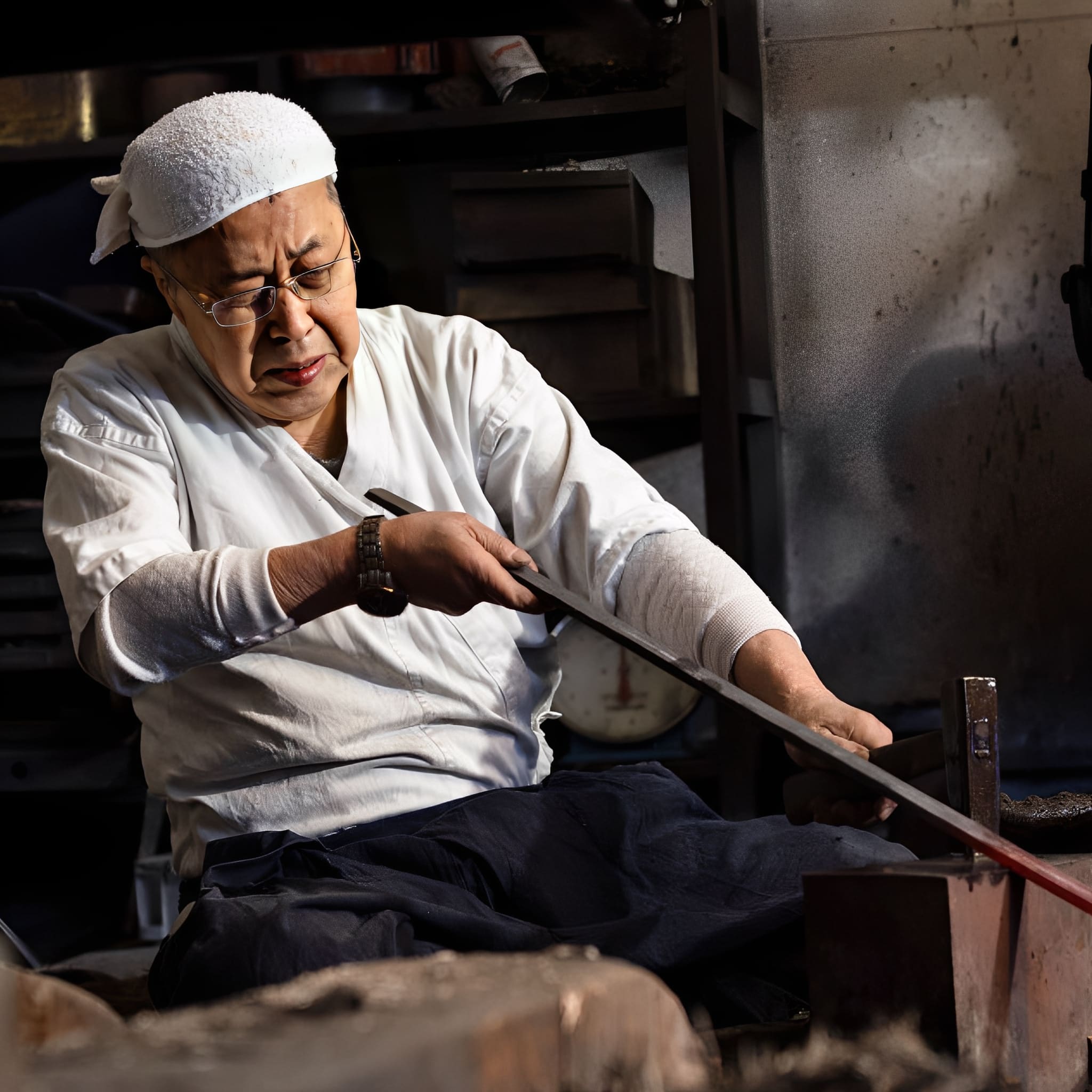
The Art of Traditional Forging
Each katana we craft is born from centuries of samurai tradition.
Our master smiths shape every blade by hand, folding the steel to achieve unmatched strength, flexibility, and beauty.
This time-honored process is not just about creating a weapon? it’s about preserving a legacy of discipline, honor, and artistry.
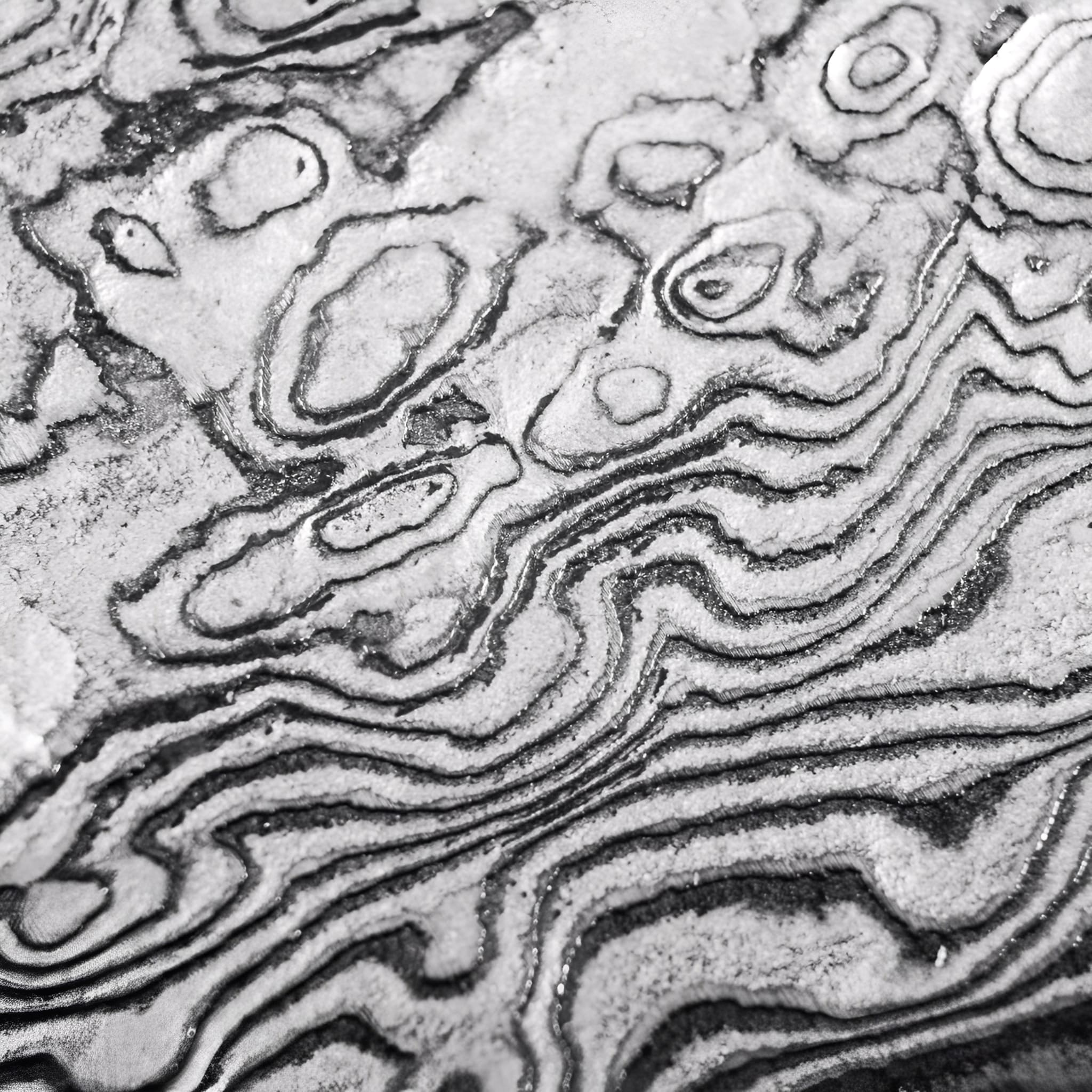
Materials Chosen Without Compromise
We select only the highest-grade steels and authentic fittings to ensure every katana is both a masterpiece and a reliable companion.
From the flawless hamon line to the perfectly balanced tang, each detail is carefully inspected to meet the highest standards of performance and aesthetics.
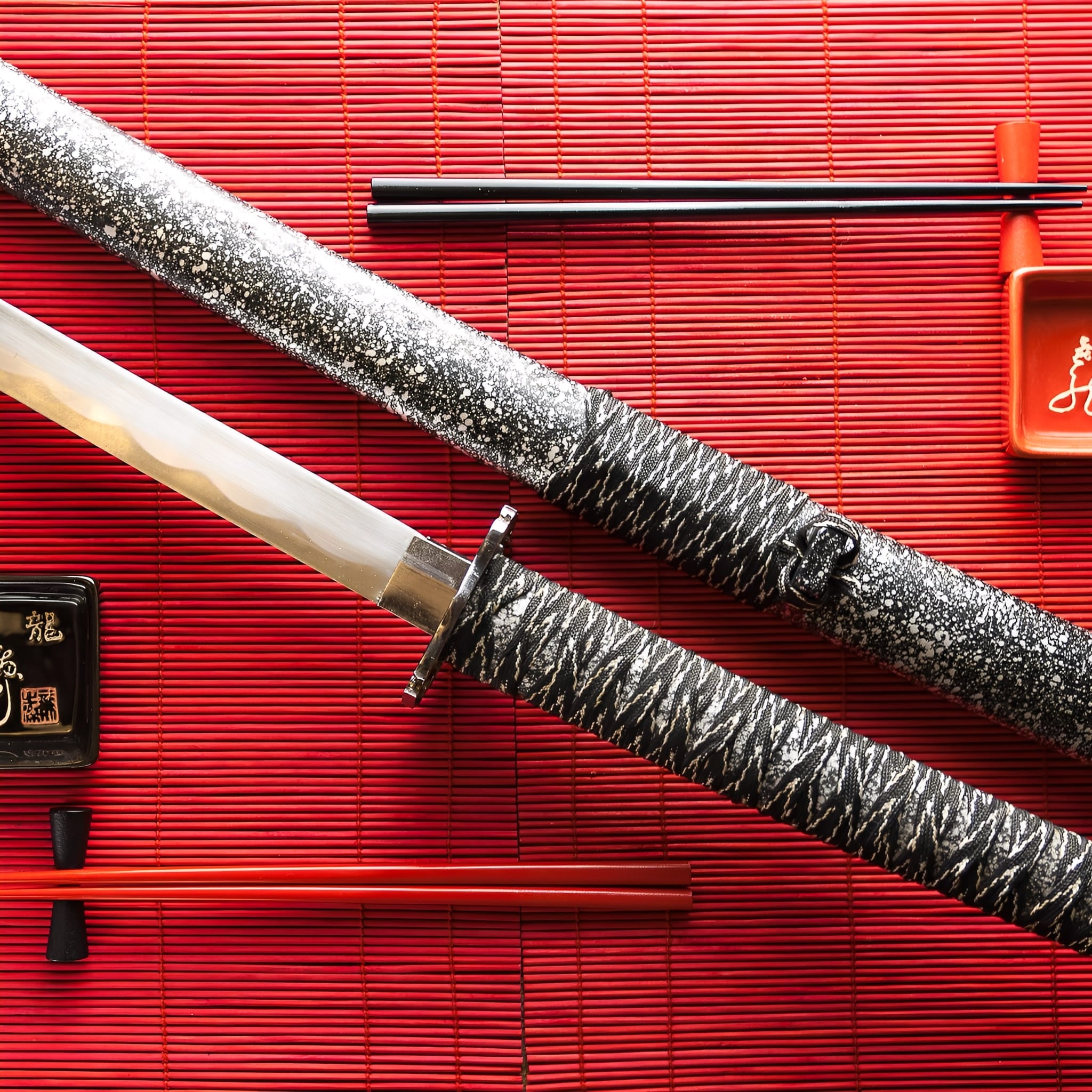
More Than a Sword, A Lifelong Legacy
Owning a handmade katana is an experience that goes beyond the blade itself. It’s holding history, tradition, and craftsmanship in your hands.
Whether displayed as a work of art or wielded with precision, your katana will stand as a symbol of timeless skill and dedication for generations to come.
-
Key Destinations
United States: 5–7 days
Canada: 5–7 days
Australia: 6–9 days
Denmark: 4–6 days
Netherlands: 3–5 days
Sweden: 4–6 days
Switzerland: 3–5 days
Finland: 5–7 days
Singapore: 6–8 days -
Central European Partners
France: 2–3 days
Germany: 3–5 days
Spain: 4–6 days
Italy: 4–6 days
Belgium: 3–5 days
Austria: 4–6 days
Ireland: 4–6 days
Poland: 4–6 days
Portugal: 4–6 days -
Extended EU Network
Czechia: 4–6 days
Hungary: 4–6 days
Slovakia: 4–6 days
Slovenia: 5–7 days
Romania: 5–7 days
Bulgaria: 5–7 days
Croatia: 5–7 days
Serbia: 5–7 days
Estonia: 5–7 days
Latvia: 5–7 days
Lithuania: 5–7 days
Luxembourg: 3–5 days
Greece: 5–8 days -
FAQ’s
Visit our FAQs page to find answers to common questions.